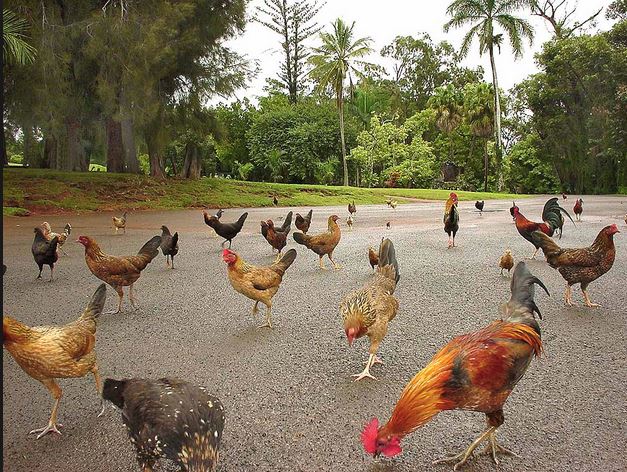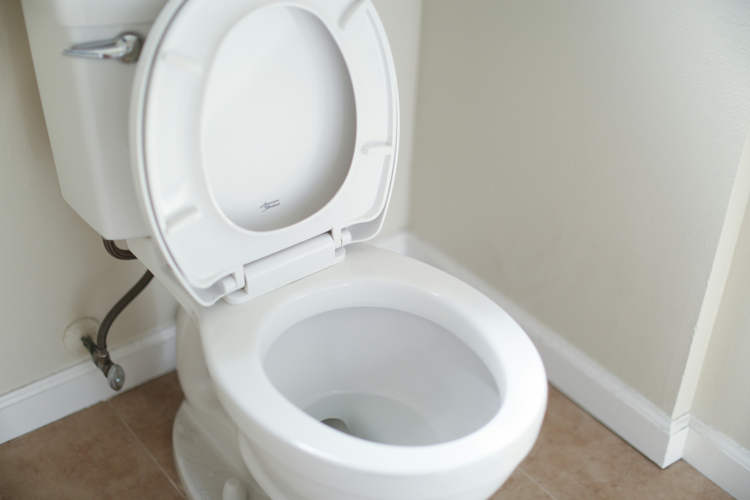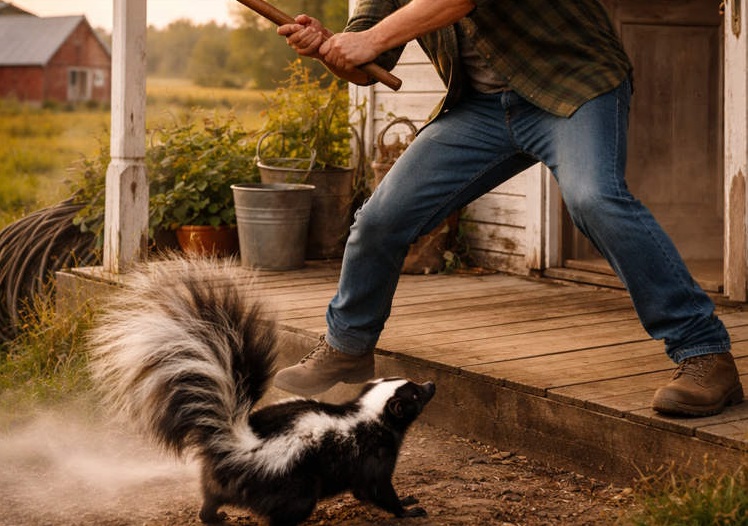The island of Kauai, in the Hawaiian archipelago, is home to thousands of feral chicken that have developed a complex relationship with the island’s human inhabitants.
From the pristine beaches of Lumbahai, to airports, gas stations, even urban parking lots, feral chickens are everywhere on Kauai Island. They roam freely, and have adapted to lead a a variety of lifestyles in this Hawaiian paradise, from eating garbage and cat food, to depending on tourists for food, or foraging on native arthropods. It’s because of this lifestyle variety that the chickens relationship with humans is so complex. On one hand, everyone agrees that they have brought down the populations of pesky Hawaiian centipedes, but then again, they also crow 24 hours a day and they tear up foliage and grass, even destroying whole gardens.

Photo: Imgur
But how and when did the Garden Island become a paradise for feral chicken? Well, the answer to that question is just as complicated as the birds’ relationship with the human population. Ask the locals, and they will tell you about hurricanes Iwa (1982) and Iniki (1992), which destroyed hundreds of chicken coops, letting the animals loose in the wild to breed. Data shows that the number of feral chickens definitely increased after these hurricanes, but they are only part of the answer.
View this post on Instagram
The truth is that Kauai has been home to wild chickens (moa) for over a thousand years. They were brought to the island by Polynesian navigators, have been living alongside the native fauna ever since. So when the domestic chickens that escaped their coops wound up in the wild, they didn’t only breed among themselves, they bred with the wild chickens as well.
View this post on Instagram
Like all the birds of Hawaii, the moa is protected as an important part of nature, and since not a lot of people can tell the difference between the native moa and the domestic chicken and their hybrids, people usually avoid harming the chickens. That’s one of the reasons why the birds feel at home everywhere on Kauai Island, they don’t have any natural predators, and people rarely lay a hand on them.
View this post on Instagram
With so many chickens running around, you would think people would go out of their way to at least secretly catch and cook them, but that’s not the case. The meat of the feral chickens of Kauai is notoriously hard, so much so that it inspired a funny local saying:
View this post on Instagram
“If you like eat da chicken get two pots of water to a boil. In one pot put da pohaku (lava rock) and in the other put da moa (wild chicken). Once the lava rock is done da moa is ready to eat.”
View this post on Instagram
The feral chickens have become an integral part of the Kauai experience. Sure, having infrastructure covered in chicken poop all the time, accidentally hitting a rooster while driving, and being woken up by a natural alarm clock before dawn, isn’t very pleasant, but having a growing population of wild chicken has its advantages. Tourists are crazy about them, and this has inspired a business around the birds.
Souvenir shops are full of items like fridge magnets, t-shirts or coffee mugs featuring the humble chickens, and other businesses benefit from indirectly, because some people choose this Hawaiian island mainly for the chickens. So while there are plenty of reasons to hate these “rodents with wings”, the people of Kauai have learned to live alongside them.
Interestingly, feral chicken live on the other islands of Hawaii as well, but the human locals, which aren’t that fond of them, and mongooses, which feed on their eggs, keep them from breeding at the same pace as those on Kauai.












